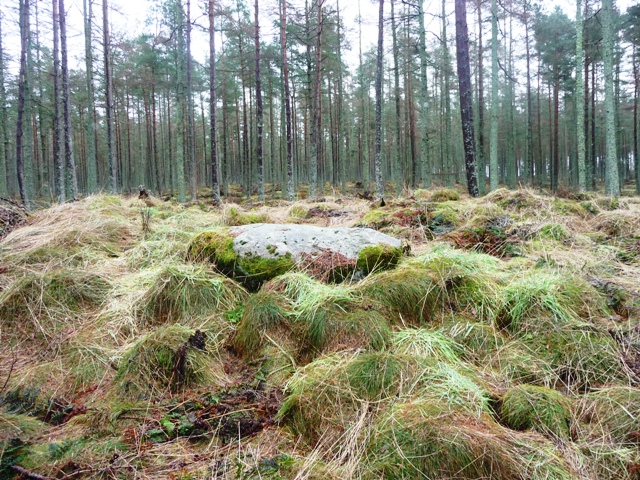From the Drum of Wartle crossroads, an excellent pub on the B9001, take the road west to Colpy, the A920. Turn south a couple of miles further on at Kirkton Of Rayne signpost. Keep going up the hill until the Smiddyhowe croft/farm the cairn is in the middle of the field to the west. Easily spotted thanks to the 4 ash trees.
To the south is Bennachie, to the north Rothmaise Hill and the Black Cairn. Further west is the similar cairn at Mellenside.
Nothing much remains of this cairn. It is enclosed by a dry stane dyke probably made from boulders from the cairn. It stands at a half meter in height. All in all rather sad, given it’s fantastic location. At least the farmer seems to leave it alone another faint memory of a once proud past.
Still the pub at the Drum is nearby and I’m no stranger so I’d better say hello.
Visited 8/2/2010.






































